This post contains affiliate links. Please see our disclosure policy.
Table of Contents
- Everything You Need to Know about Bone Broth
- Bone Broth Facts
- Bone Broth vs Regular Broth
- What is the difference between bone broth and stock?
- Which store bought bone broth is best?
- Is homemade bone broth better than store bought?
- Chicken Bone Broth Recipe
- How to Use Bone Broth
- Healthiest Bone Broth Recipes
- Make your own chicken bone broth
- Ben’s Famous Chicken Bone Broth Recipe
- So, is bone broth better than regular broth?
Everything You Need to Know about Bone Broth
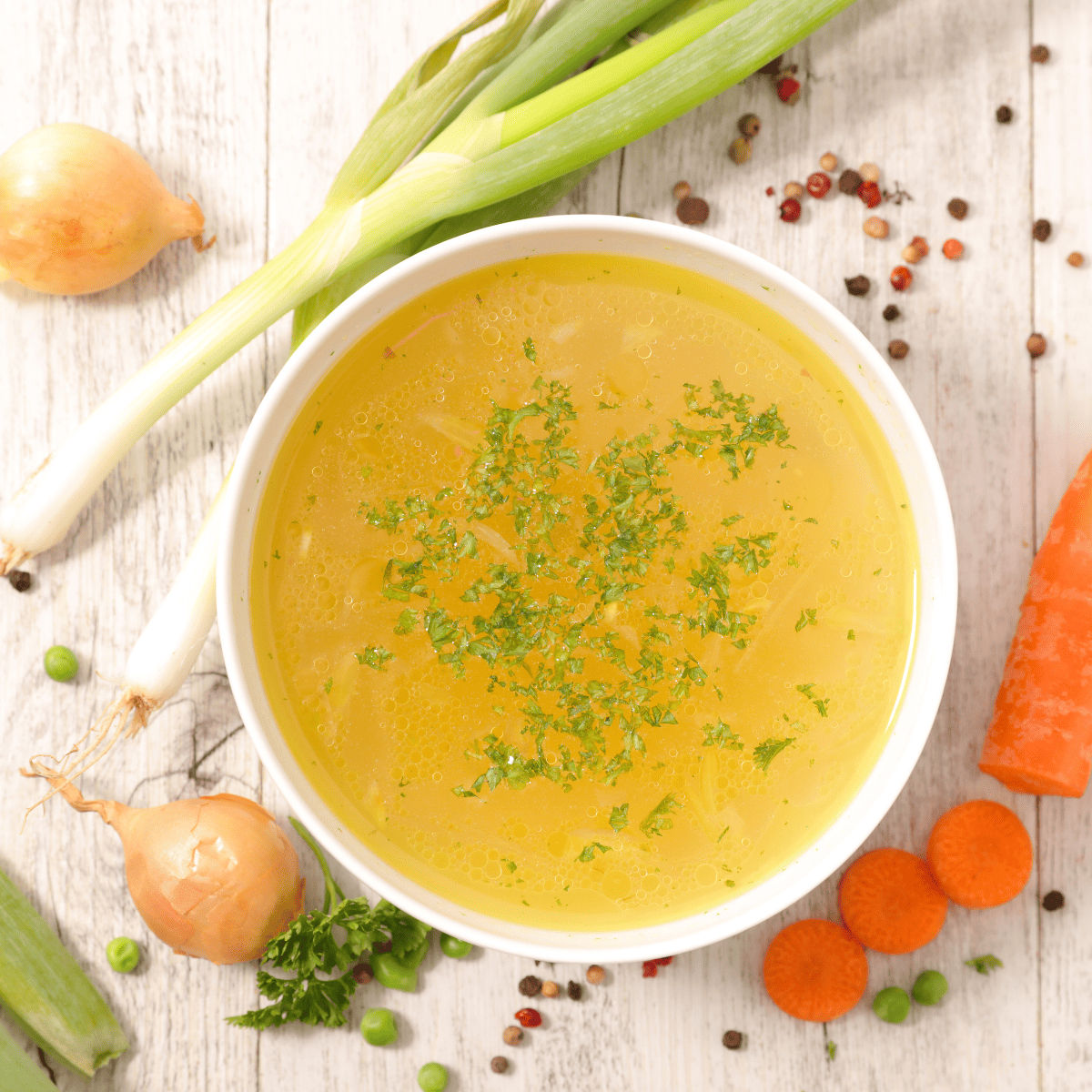
Is bone broth healthy? If you’ve been around my account for a while or if you follow other health-oriented accounts, you’ve probably at least heard of bone broth! It’s not new (it’s actually ancient!), but it is having a recent resurgence in the food and nutrition world, and I’m here for it!
If you’ve never heard of it, that’s okay too! I’m going to take it from the top and break down all the information on bone broth- what it is, why I love it, and how I use it in cooking. Believe it or not, recipes where I incorporate bone broth are actually some of my kids’ favorite recipes that I make, and I love how much extra nutrition they get with just one simple ingredient swap.
This post contains affiliate links. As an Amazon affiliate, I earn from qualifying purchases at no extra cost to you.
Bone Broth Facts
So, what is it? The name can be a little confusing. Does it have bones in it? Do I have to make it myself?
Not really, and no! (Although you absolutely can make it on your own, and it is actually a really cool no-waste experiment to see how you can squeeze out all the nutrition of animal products!)
Bone broth would actually more accurately be called a stock, as it’s made by boiling the animal bones and connective tissue in water, herbs, and spices. Stock- like chicken stock- is usually made by using the bones or the animal, whereas broth is generally made with just the meat. But alas, it’s known as bone broth and that name has stuck!
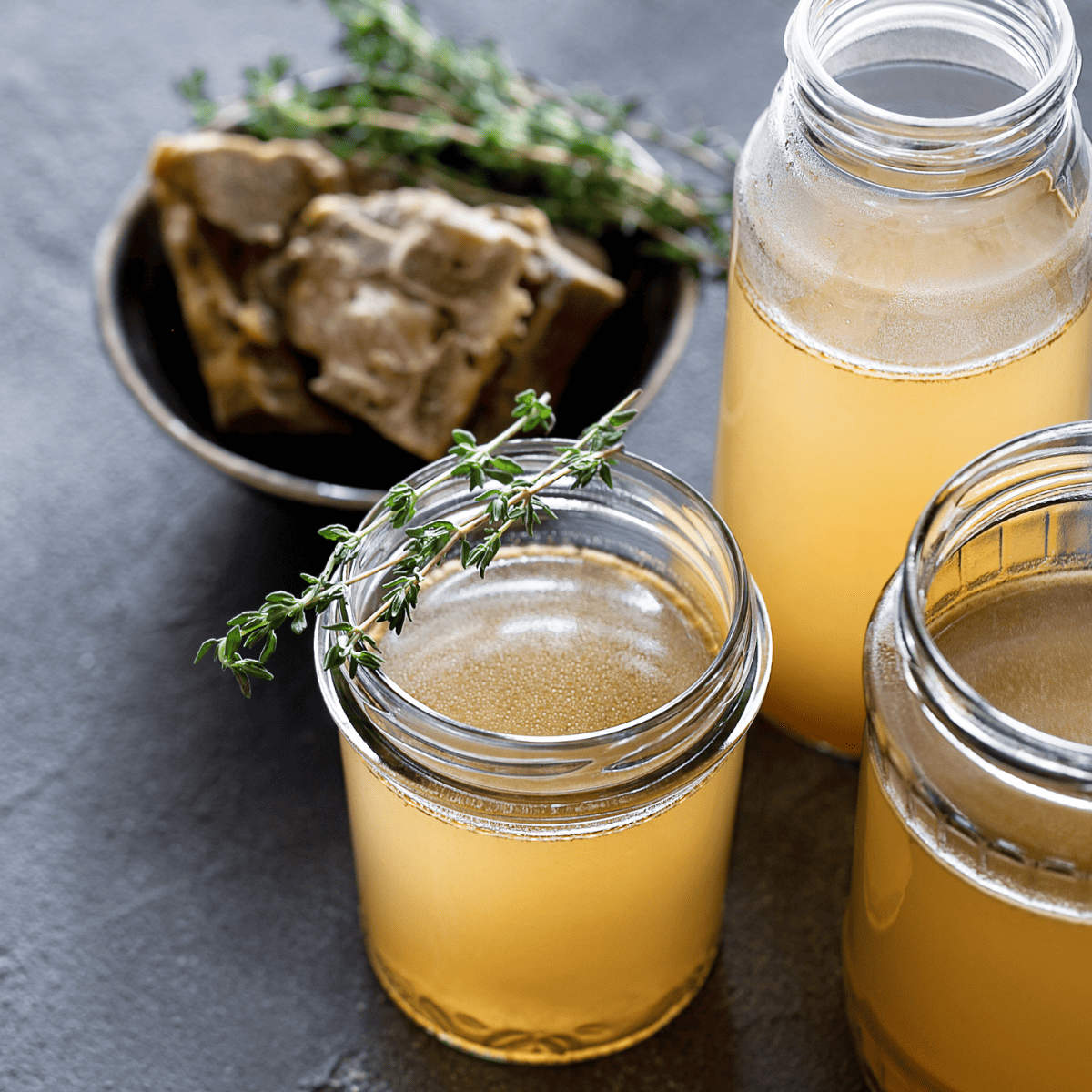
Bone broth is a great way to use parts of the animal that aren’t traditionally just eaten on our plates, but still are loaded with nutritional benefits (parts with lots of connective tissue). By boiling them and simmering them down into a liquid to use for the base of soups, stews, or in other recipes, we’re maximizing the amount of nutrients we can get from our foods! (And I don’t just mean if you make your own- this applies to store bought bone broth, too!)
My personal favorite bone broth brand, Kettle and Fire, say this about their bone broth process, “We combine marrow bones with premium organic vegetables and filtered water in steel kettles. The mixture is slow-simmered for 20-24 hours at 190° F. This provides enough time for nutrients, collagen, and amino acids to soak into the broth.” (Disclosure: this post is not sponsored, but I have worked with Kettle & Fire in the past.)
So making bone broth is a slow process that really allows all the nutrients to be drawn out of the ingredients to create a super nutrient-dense end product. Left as is, bone broth is also gelatinous rather than just simply liquid, but that gelatinous part is mostly strained out so you’re left with just the powerhouse liquid to use in your favorite recipes.
Bone Broth vs Regular Broth
When I say ‘regular’ broth, I’m talking about the types we most commonly see on grocery store shelves- chicken, beef, vegetable.
Like I mentioned, regular broth is traditionally made with water, meat/flesh (or veggies for veggie broth), and spices/herbs. What you’re left with is a tasty, but subtle savory flavor that makes a great base for soups, sauces, etc, but is relatively light nutritionally. Broth doesn’t have many calories, carbohydrates, or fat. It usually does have a bit of protein (4ish grams per cup of chicken broth), but is overall pretty mild on taste and nutrition. It’s a totally fine ingredient in any dish, but it just doesn’t add much beyond liquid and a little savory depth of flavor.
Bone broth, on the other hand, has quite a different nutritional look and taste. It is more nutritionally dense across the board as compared to regular broth. Bone broth is a little more calorically dense since its made with the marrow bones, has a higher level of vitamins, minerals, and electrolytes, and is a great source of protein! For example, Kettle and Fire beef bone broth has about 19 grams of protein per container, which is about 10 grams per cup– double that of traditional broth. The consistency of bone broth is a little thicker (but not too thick!), giving it a really satisfying mouthfeel. It also has more of a distinguishable savory flavor, so you do have to keep that in mind when cooking with it. I often use a mixture of bone broth with traditional broth or water depending on the recipe.

What is the difference between bone broth and stock?
Both are made with bones. But bone broth is simmered for a longer period of time than stock, making it more concentrated. Bone broth is typically more flavorful because of the longer simmering period, which can be up to 2 days. Stock is more traditionally used as a cooking ingredient, and bone broth for sipping. However, I like adding bone broth to recipes, too. Bone broth is higher in nutrients and protein.
Which store bought bone broth is best?
My personal favorite store bought bone broth is from Kettle and Fire. We always have their beef bone broth and chicken bone broth in the pantry. But there are other brands that offer good products, too! I also like the Pacific Foods bone broth. Wasn’t a fan of the Trader Joe’s one, unfortunately!
I love that they are shelf-stable, and stay good in the refrigerator for 7-10 days after opening. That means you don’t have to worry about coming up with back to back bone broth recipes if you don’t use the whole carton!
Kitchen tip: ALWAYS grab your sharpie and label the date on the package for when you need to use it by. I always think I’m going to remember, and I never once have remembered. So instead of guessing if it’s still good, just jot that date on there!
Is homemade bone broth better than store bought?
There are three main differences in homemade vs. store bought.
- With homemade, you can fully control the ingredients and modify the taste to your liking. You can decide how much salt to add, seasonings, etc.
- Time vs. convenience. Sometimes you have the time, sometimes you don’t! I greatly appreciate the convenience of store bought options.
- Homemade costs less. You can make a humongous batch and freeze the extras. These are what I use for freezing leftover broth, soups, stews, sauces, batters, etc. I prefer this size for freezing broth, since many recipes call for 1 cup increments of broth. For leftover soups and stews, I like the 2-cup size.
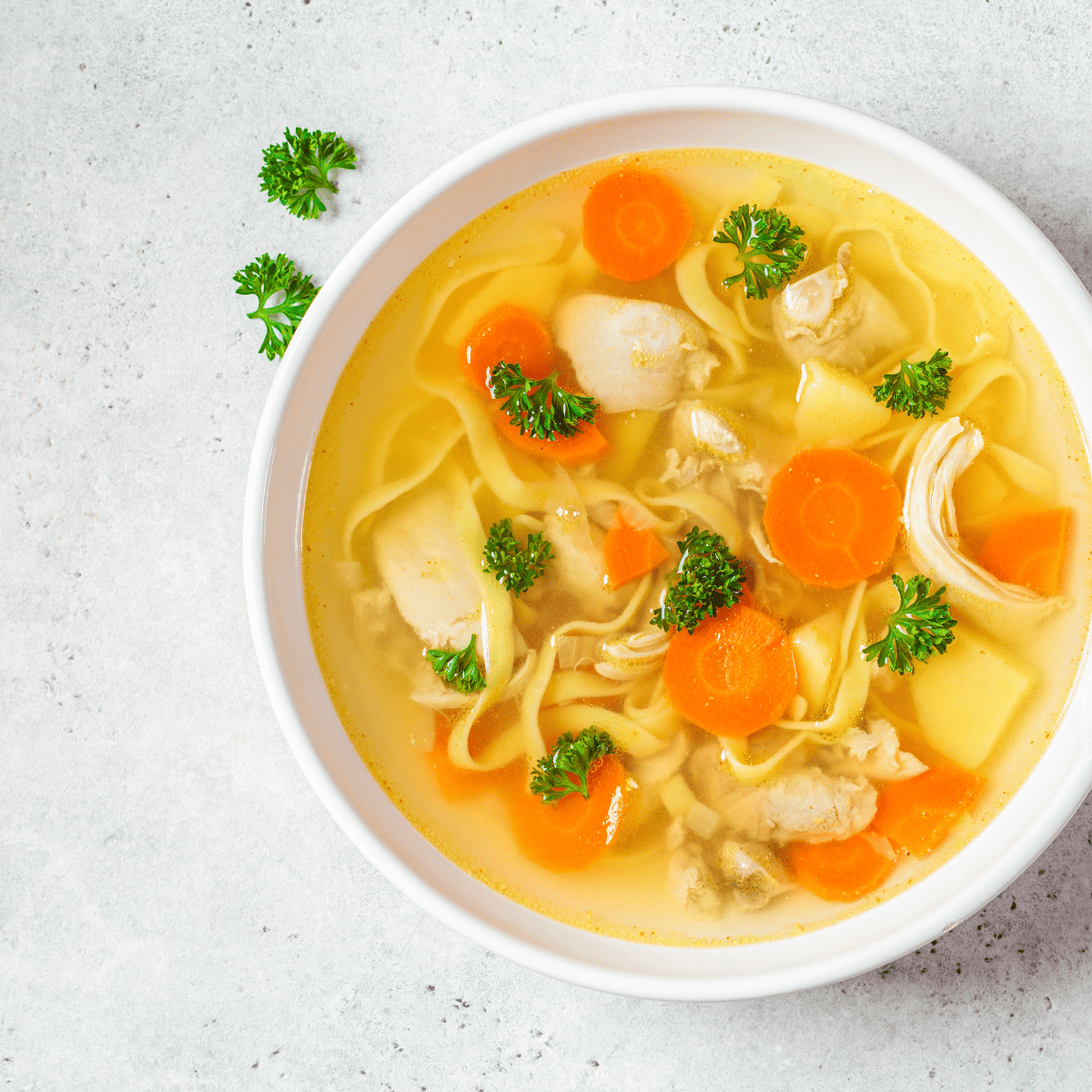
Chicken Bone Broth Recipe
My husband makes the most delicious chicken bone broth recipe! It’s very easy to make, but it does take quite a long time to simmer. We like to make it on a Saturday, let it simmer overnight, and then pour it into storage containers on Sunday.
He likes to pack it in these jars (that I also use for my kids’ smoothies!) to take to work to drink in the afternoons. It’s such a comforting thing to drink!
How to Store Bone Broth in Freezer
We also will freeze the extras from a big batch to either drink later or use in recipes calling for broth. I always freeze it in these – they are the BEST!
Jump to Recipe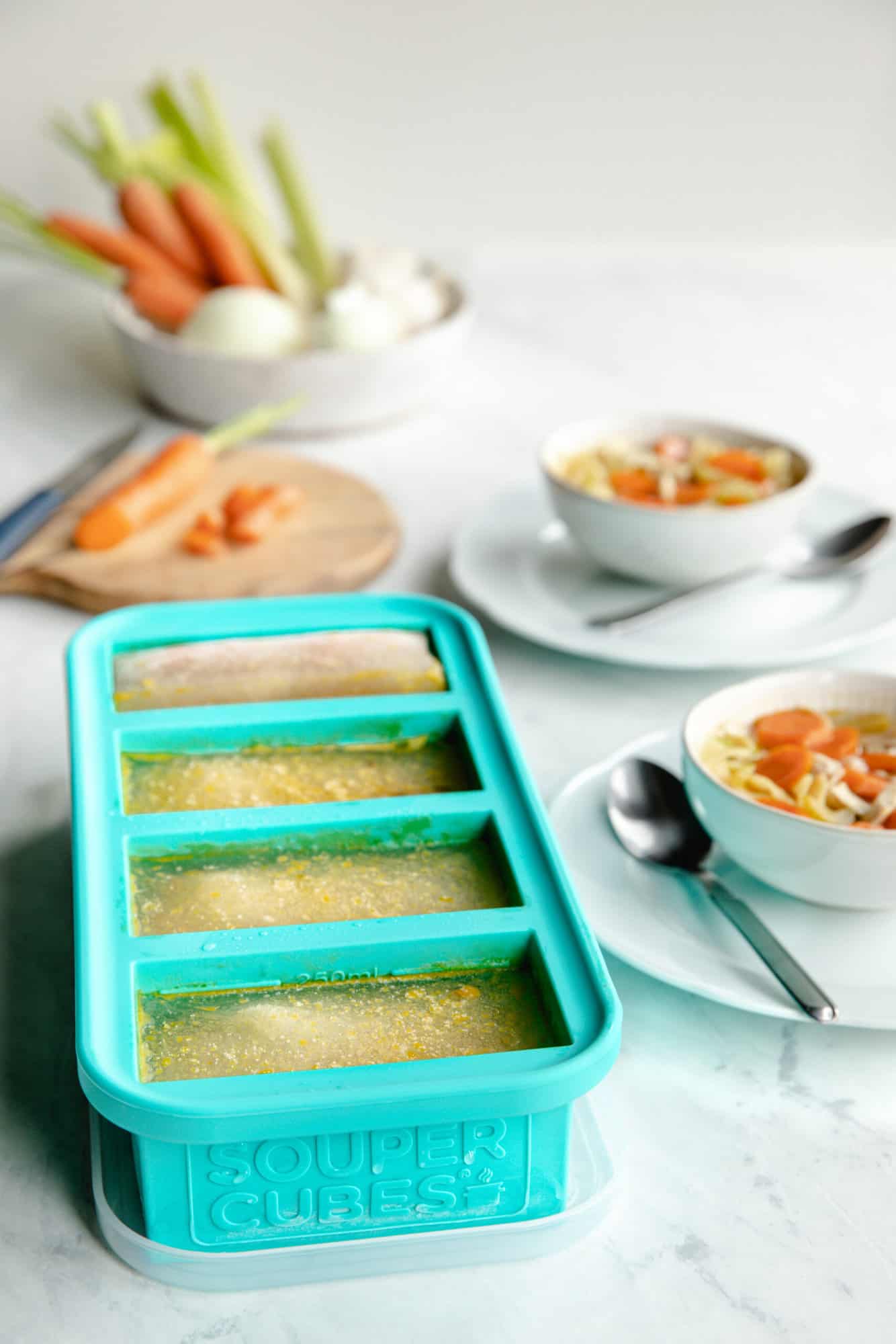
How to Use Bone Broth
You can use bone broth a ton of ways! It’s versatile, particularly in the winter months when you are eating more broth based foods.
- Use it in recipes calling for broth: If a recipe calls for 4 cups of broth, try 2 cups of bone broth and 2 cups of water. The difference in protein is big! 4 cups of broth would have 8 grams of protein. 2 cups of bone broth has 19 grams of protein, so it’s over double!
- Drink it on its own, warmed up in a mug.
- I sometimes drink it in place of tea, especially if I’m feeling under the weather or my stomach feels a little off
- It’s great for kids to sip on when sick with a low appetite
It’s surprisingly hydrating, warm, and nutritious. I actually love drinking it on especially chilly nights. It feels good to sip on something savory and packed with nutritious goodness. And it’s become a go-to for us when my kids are feeling sick. (Here are some other tips for feeding your sick kiddos!)
I wouldn’t necessarily use it as a base for soup on its own due to the slightly thicker texture and mouthfeel (sometimes you just need a good old chicken broth). But I like to weave it into dishes pretty much every chance I get. It works great for thicker liquid dishes like stews and chowders. You end up with a nearly identical end product, but loaded with way more protein, vitamins, minerals, and electrolytes.

Healthiest Bone Broth Recipes
1. Cook grains and pasta with it
Stock and broth are both great flavor-boosters to for cooking pasta, but the bone broth will impart a little extra nutrition! The bone broth will get soaked up by the noodles/grains which will give the dish more protein, vitamins, and minerals. Whether it’s mac and cheese or any other pasta or grain dish, I usually cook the noodles in a combination of bone broth and water. I’ve done this with all sorts of pasta, rice, farro, and couscous!
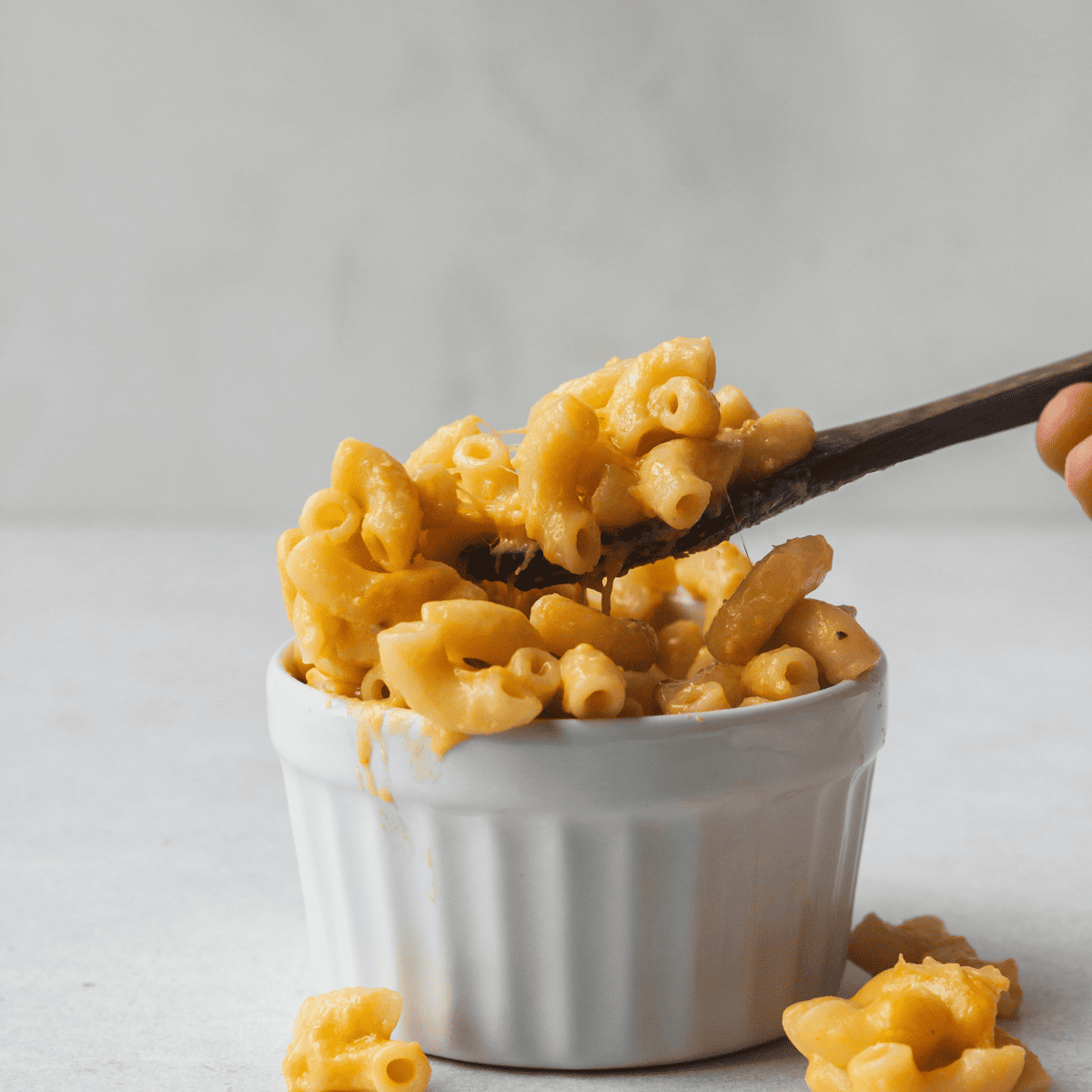
2. Add bone broth to pasta sauce
if you need to thin out your sauce or if the sauce recipe calls for a liquid, that’s a perfect place for bone broth!
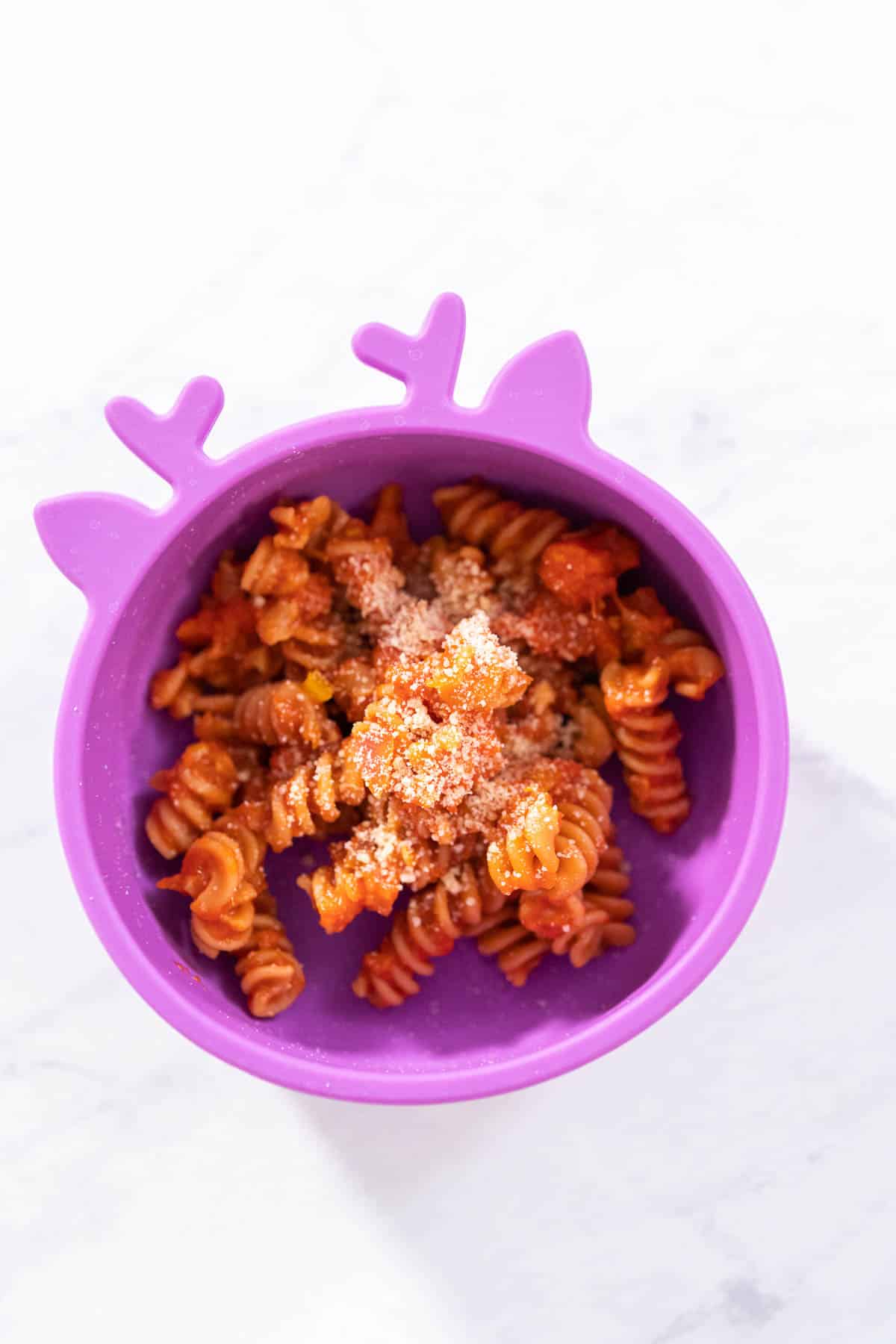
3. Bone broth in mashed potatoes
Use it as the thinning liquid in a mashed potato recipe in place of milk to make it dairy free. Or boil your potatoes in a mixture of bone broth and water so the potatoes soak it up.
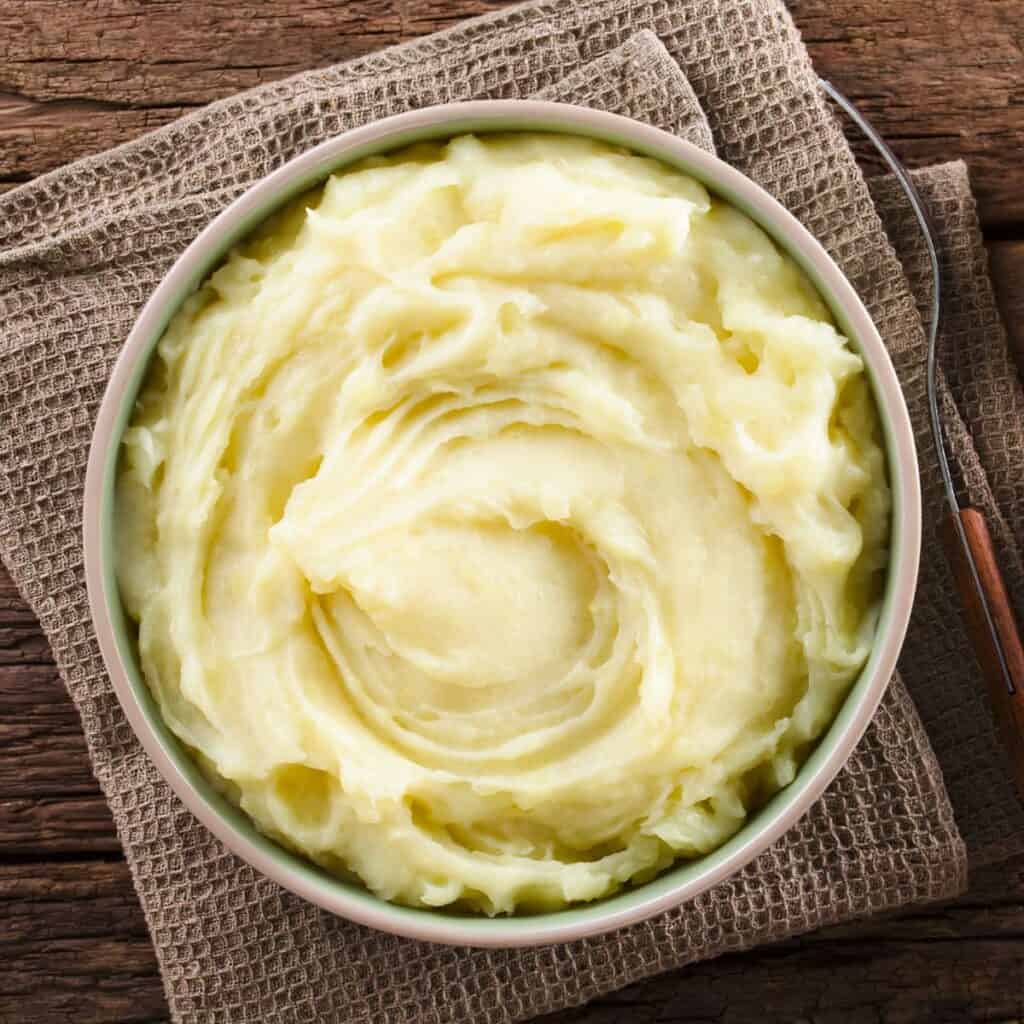
4. Serve ramen in bone broth
This is literally the only way I’ll give my kids ramen as a meal! I love knowing we took a convenience product and boosted the nutritional value big time. Btw- they make the CUTEST practice chopsticks for kids. My kids have so much fun with them!
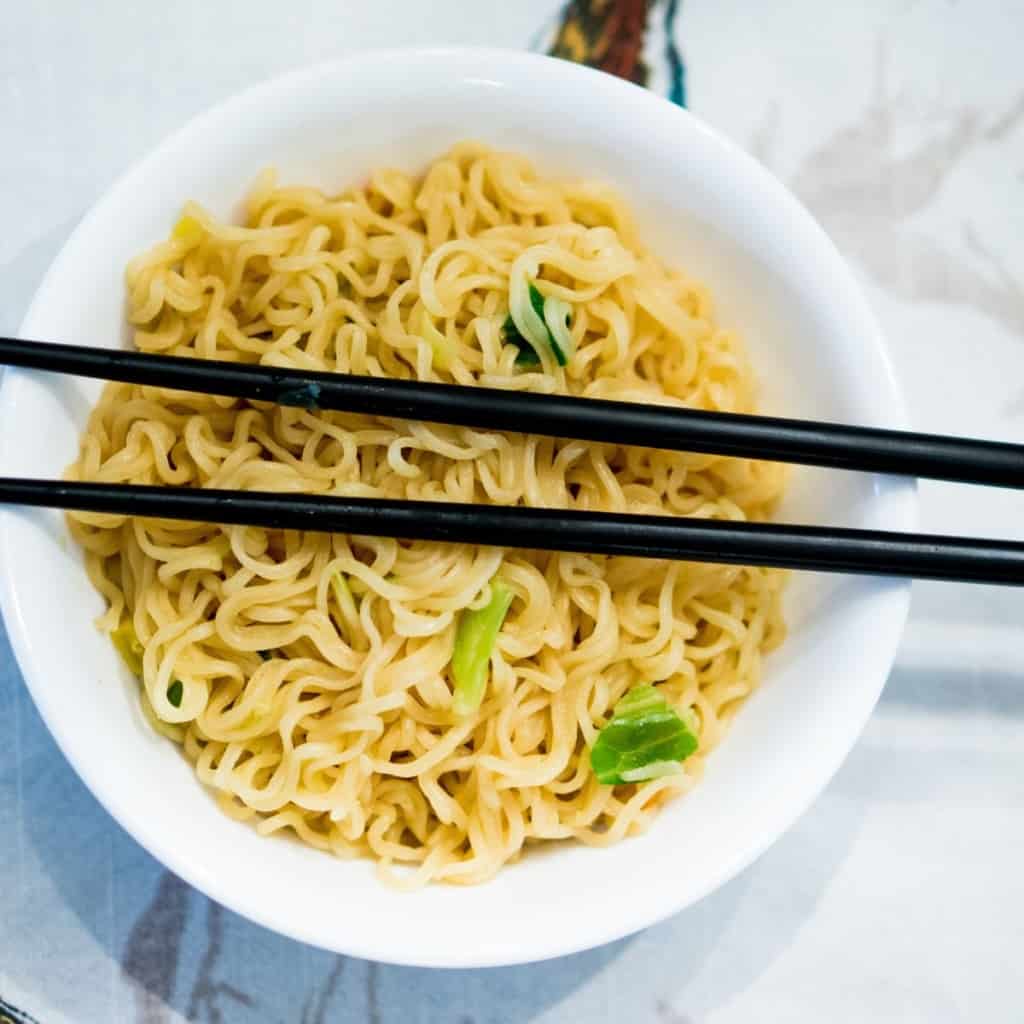
5. Puree bone broth with veggies
When I have leftover cooked veggies that my kids didn’t touch, I’ll blend them with bone broth. I freeze into Souper Cubes, and defrost them later to stir into sauces. It’s a win-win: no food waste AND a boost of nutrition the next time I throw together a pasta dish. Here’s a link to a video I made of how I do this!
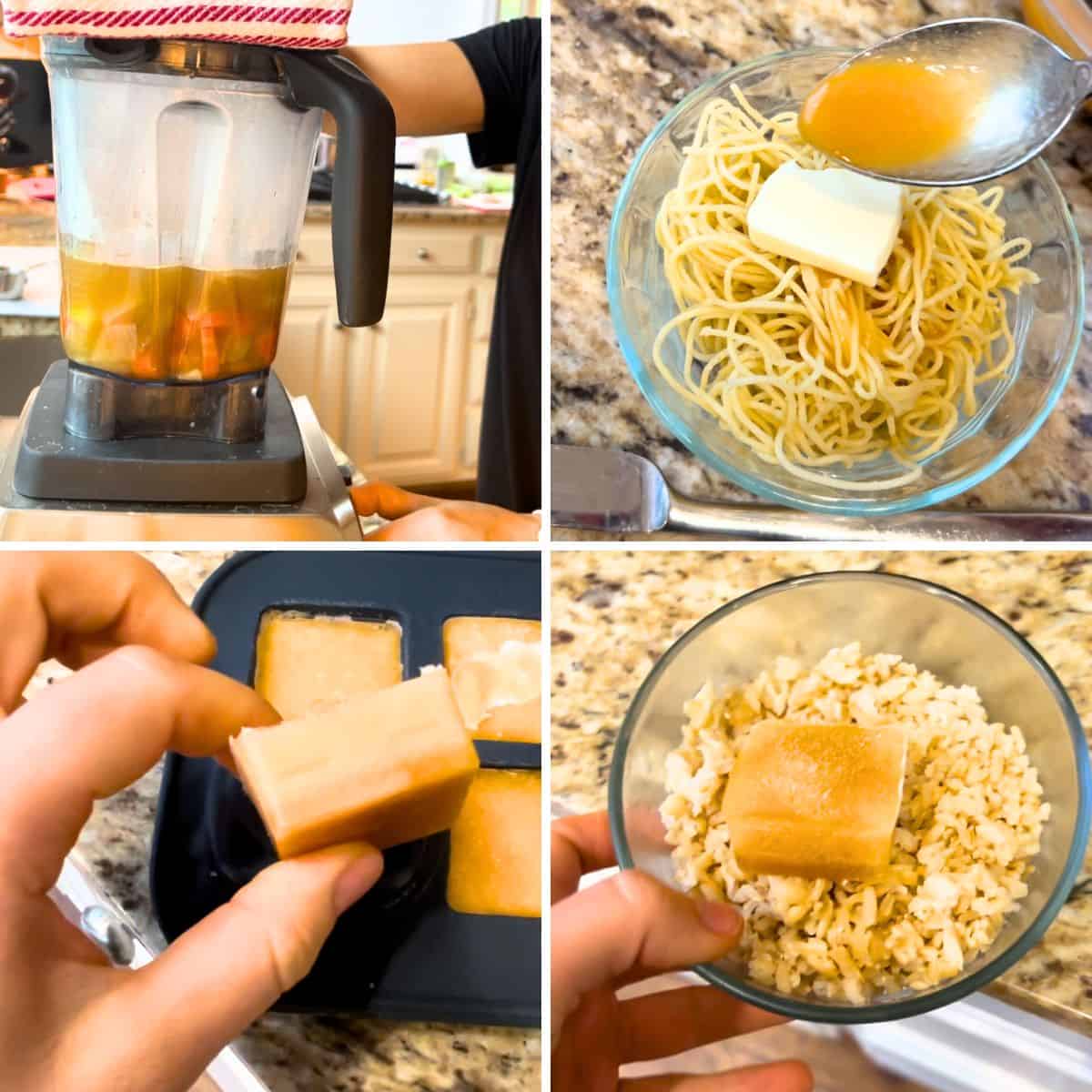
6. Bone broth hot cocoa
This one might be a little crazy, but Kettle and Fire posted this bone broth hot chocolate recipe on their blog, and it piqued my interest for the colder months! You might have to play around with the amounts to make it how you like it (and I’d recommend skipping the optional collagen if kids are partaking), but could be an interesting, sweet (not savory) way to use this ingredient!

7. Thin a baby puree with bone broth
This is one of my favorite ways to get a little extra nutrition for newer eaters. When babies are starting solids, textures often need to be thinned out or pureed. You can always use breast milk, or small amounts of cow’s milk. But this is another option that would add some more nutrition than if you were going to use plain water. (Linking my all time favorite blender here for making purees!)
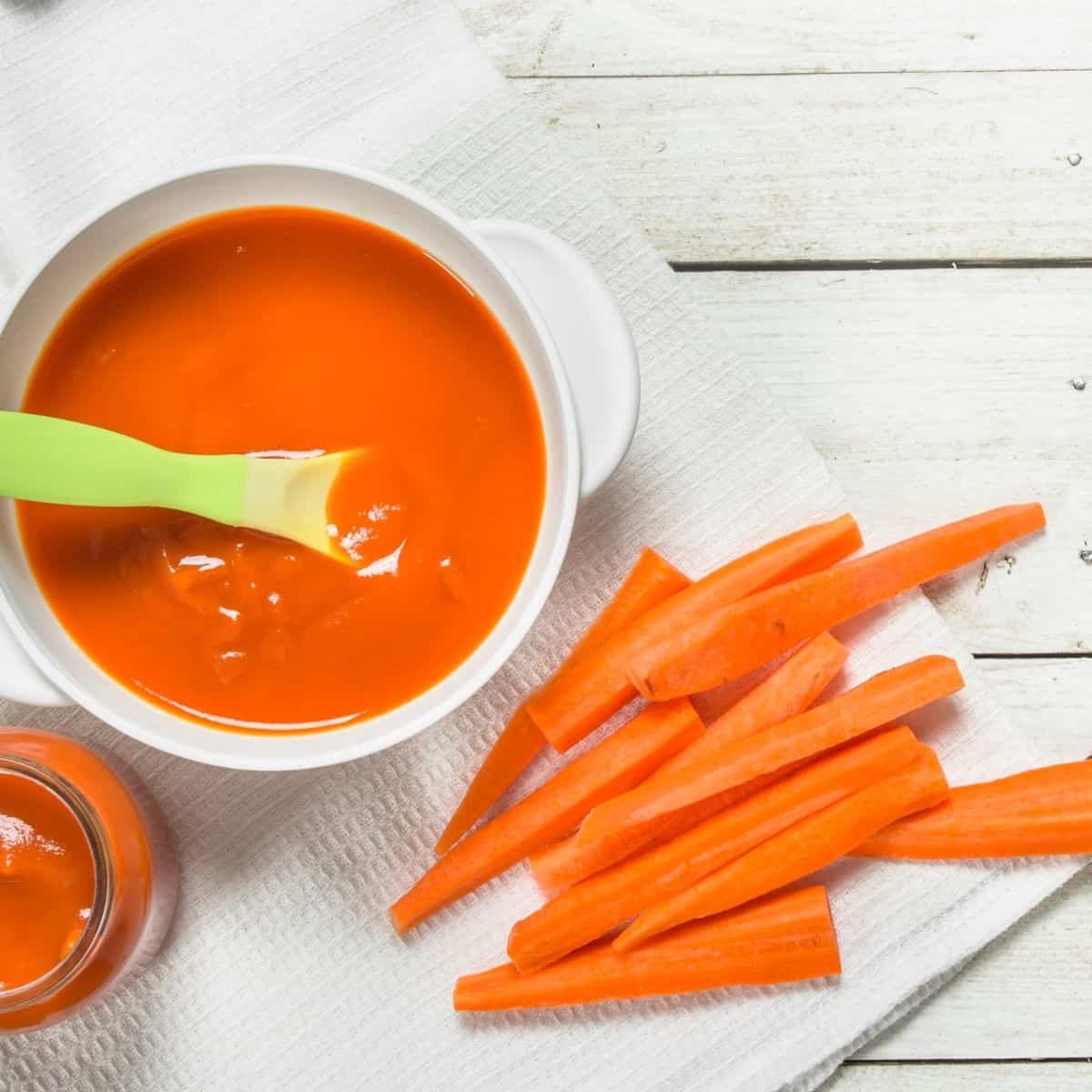
Make your own chicken bone broth
While there are some great store bought bone broth options, it’s definitely pricey to always buy it pre-made. If you have the cooking time, you can make a really delicious bone broth yourself quite easily! My husband does it every couple of weeks during the cooler months. He uses a whole chicken when he makes enchiladas (I need to get that recipe up on here too!), and makes the bone broth then.
Ben’s Famous Chicken Bone Broth

Equipment
- 1 Stock pot 8 qt or larger
Ingredients
- 1 whole chicken, 4-6 lbs
- 4 carrots
- 1 stalk celery, (the whole bunch)
- 1 large yellow onion
- 4 cloves garlic
- 1 dried bay leaf
- 2 sprigs fresh rosemary
- 5 sprigs flat leaf parsley
- kosher salt, to taste
- pepper, to taste
Instructions
- Add whole chicken to large stock pot. If giblets are in a pouch, remove from the pouch and add to pot.
- Liberally coat the chicken in salt and rub into the skin. This will be about 1-2 tablespoons. Sprinkle pepper onto chicken.
- Roughly chop the carrots, celery, and onion (leave peel on). Add to pot.
- Smash 4 garlic cloves with the side of your chef knife. Add to pot.
- Add bay leaf and fresh herbs to pot.
- Fill pot with water to cover chicken entirely. The water should be at least 1 inch higher than the chicken.
- Bring water to boil over high heat. Once boiling, reduce heat to simmer, cover pot with lid. Check chicken with thermometer after 1 hour. Continue cooking until internal temperature of the chicken reaches 165 degrees.
- Remove chicken from pot; leave everything else in the pot, including all the liquid.
- Remove meat from chicken. Set aside to use however you'd like. Add ALL other parts of the chicken back to the pot, including bones, skin, innards.
- At this point, you may choose to add additional water to the pot. If you want a really rich, dark colored broth, do not add water. If you want it mild, add a few cups of water. I prefer it without added water.
- Bring to boil over high heat. Reduce to simmer and cover pot. Simmer at least 5 hours, but preferably overnight.
- Remove pot from heat. Once cool enough to handle, remove large pieces from pot with slotted spoon and discard. Then use a fine mesh strainer to strain the broth thoroughly. We pour it into multiple large glass pyrex storage containers.
- Then use as you'd like! Sip from a mug (and add a sprinkle of sea salt to taste)!
So, is bone broth better than regular broth?
It depends on what you’re looking for! I love bone broth for its added nutritional value and its deeper flavor, but there’s some recipes where you want a milder base. It can be another tool in your toolbox to help you weave in some more protein, vitamins, and minerals in dishes that you probably already prepare for your family. Or, just a really delicious beverage! Let me know if you try it!















This was so good! Love adding it to recipes to boost protein for my toddler!
We love making this and freezing it!
Super easy recipe to follow and tasted delicious!
Thanks for the info!! I’ve always boiled leftover bones to make a chicken soup etc and I assumed all broth was made like that. Now I’ve learned the difference of stock and broth. I’ll try boiling the chicken from raw.